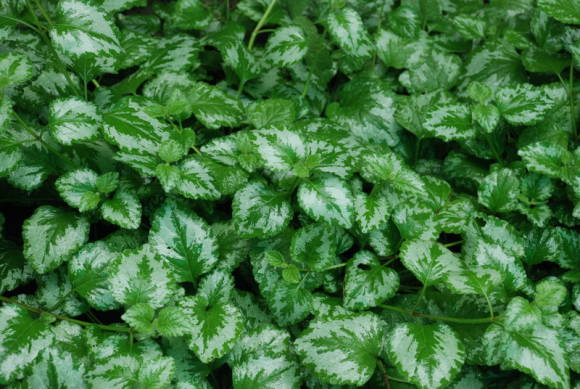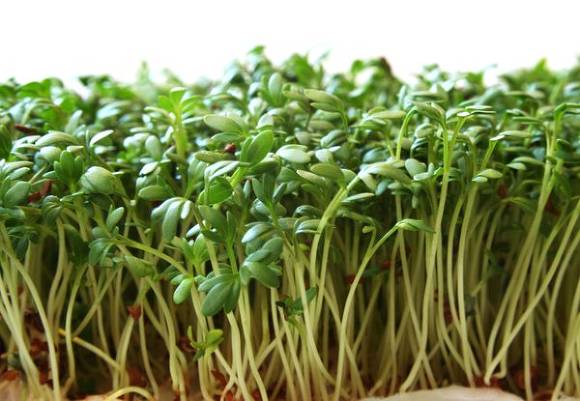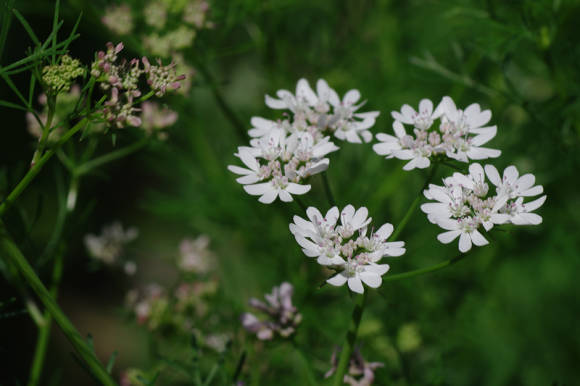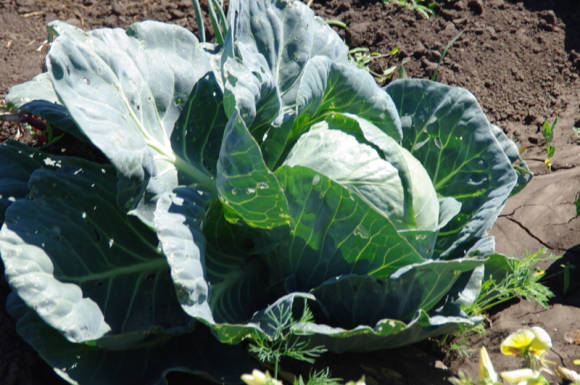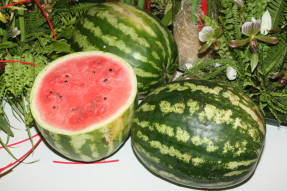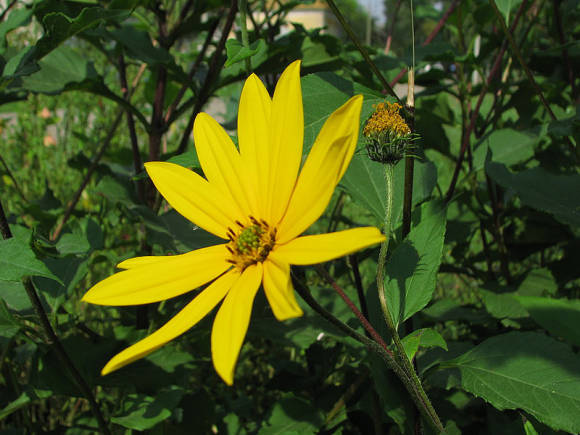Genus ofiopogon (Ophiopogon) includes about 65 species distributed from Japan to the Himalayas. These are mainly perennial herbaceous plants. Many of them outwardly resemble cereals, but they belong to the asparagus family. (Asparagaceae)... The most commonly used culture is Japanese ophiopogon (Ophiopogon japonicus) due to its decorative qualities and use in Chinese traditional medicine, less often - ofiopogon yaburan (Ophiopogon jaburan).
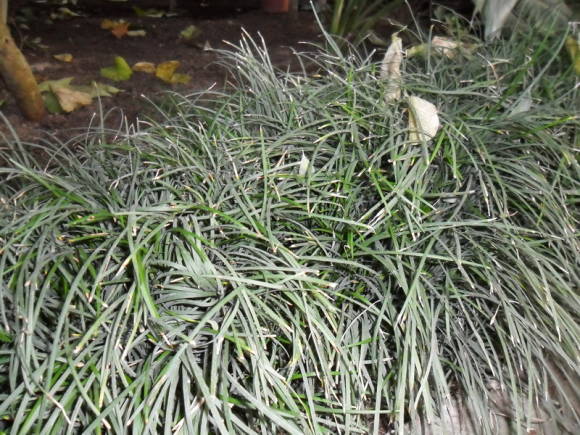
Japanese ophiopogon (Ophiopogon japonicus) sometimes found in literature under Latin names Convallaria japonica, which in translation means Japanese lily of the valley (the similarity becomes clear when it blooms), Anemarrhena cavaleriei,Ophiopogon stolonifer; Mondo japonicum, hence the English-language name for herb Mondo; Slateria japonica.
In English literature, it can be found under the names snake's beard - snake sting, dragon's beard - dragon sting, monkey grass - monkey grass, fountain plant - fountain plant (in connection with the lush sultan of leaves).
And the plant is really very beautiful. Sessile linear or narrow-lanceolate leaves up to 20 cm long form a dense bush on numerous shoots. The color is green in nature, but in culture it can also be purple. The inflorescence is short, spike-shaped, with small white or purple flowers, located 2-3 pieces in the axils of the bracts. Seeds are round, 7-8 mm in diameter.
In the wild, it blooms in its homeland (Korea, China and Japan) from May to August (depending on latitude), with us, of course, later. It is found in forests, bushes, in the mountains of some provinces of China it rises to a height of 2800 m.The karyotype of the plant is very different, mostly tetraploids, but there is even a hexaploid (2n = 34 *, 36 *, 68 *, 72 *, 108 *) (Flora of China).
Growing and caring for indoor conditions

The plant is shade-tolerant, therefore, in countries where the winter is not too harsh, it is grown in deep shade under the canopy of trees, where few species can not only be decorative, but also simply survive. In our conditions, it is more often used in phytodesign as a houseplant. With our short days and often rather dark rooms, this plant turned out to be very useful. It can even be placed at the back of the room. Moreover, in recent years, phytoncidal properties have been discovered in him, on average, the air around the plant is 40-60% cleaner from all kinds of pathogenic and opportunistic microorganisms than indoors in general. And in combination with its endurance, it is indispensable for creating aerofitotherapy modules in combination with other phytoncidal plants.
When grown in a room in winter, he still needs a lowered temperature, + 15 + 16 ° C, so that he has a semblance of a dormant period and the leaves do not dry out from the heat of the central heating batteries. During this period, it is advisable to have a humidifier in the room, especially if the reduced temperature cannot be maintained. Windows are preferable to the east and west exposure, but can be placed on the northern windowsill. In summer, the plant can be taken out on the balcony for a walk.
Transfer to a larger pot or division of plants is carried out annually in the spring. The soil is necessary loose, therefore, in equal proportions, they mix leaf and sod land with sand.
Ophiopogon is easiest to propagate vegetatively. The bushes are divided into parts with several shoots and roots and planted in pots or containers, depending on the design idea. It is best to do this in the spring, at least in the summer. By the way, it is not "harmful" and not aggressive, so it can grow in the same container with other plants. If you manage to get the seeds, then try sowing them in the spring and place them on a warm windowsill.
Water the plants abundantly in the summer, but make sure that the water does not stagnate in the pot. In winter, watering is limited, but this does not mean that the plant is transferred to the "cactus mode", which in no case should dry out.The ophiopogon reacts to this painfully, because his homeland is in a monsoon climate, where rains are abundant and frequent.
He is practically not affected by pests and diseases, and this, of course, pleases any grower.
Fertilizing plants is not difficult. Considering that it is actively grown in China to obtain medicinal raw materials, this issue has been studied well. In addition to the standard recommendation from the books "feed with liquid fertilizers once every 10 days", you can advise to differentiate the introduction of nutrients by season. The Chinese have found that the need for nitrogen is highest in spring and in the first half of summer. Moreover, when the plant is grown in open ground, where the soil does not freeze, it still stops absorbing nitrogen in winter. The signal to activate this process is an increase in temperature. Therefore, you should not even try to give nitrogen to the plant in autumn and winter, so as not to aggravate the biorhythms already disturbed in a warm room.At the same time, the need for nitrogen, as well as for potassium, is high in ophiopogon, and it begins to absorb potassium ... in winter. Phosphate fertilizers are necessary in the autumn and winter, as well as in the early spring.

Medicinal properties
But this all concerned Ophiopogon in its decorative incarnation. Interestingly, it is a well-known traditional Chinese medicine. The raw material is thickened roots of Japanese ophiopogon. The ophiopogon root (in Chinese Mai Men Dong) is dug up, washed, repeatedly turning, dried in the sun and dried in the shade until 70-80% of the moisture contained in them is lost, the adventitious roots are cut off and dried.
Chinese medicine classifies them as plants used in winter when there is a lack of Yin energy. But, when used for coughing, it is not recommended only for dry cough with difficult expectoration and hemoptysis. In case of dysfunction of the gastrointestinal tract, the indication is dry mouth, constant thirst, dry irritation of the gastrointestinal tract. According to Chinese doctors, it brightens the heart and relieves irritability. But Chinese medicine is symptom-based, and scientific medicine craves classical research. And they have been actively pursued in recent years.
The roots contain saponins, isoflavonoids (ophiopogonon), polysaccharides, cyclic peptides, fatty acids.
Active research of chemical constituents and their pharmacological activity, primarily in China and Japan, continues at the present time. In vitro, the cytostatic activity of steroidal saponins (ophiopogonins) against liver cancer cells and some other types of cancer was noted. Isoflavonoids isolated from ophiopogon roots and named ophiopogonanones E and H have anti-inflammatory effects.
In addition, a fraction of heteropolysaccharides was isolated, which exhibited high immunoregulatory and antioxidant activity. It is explained by the presence and correlates with the amount of hexauronic acid and sulfur atoms in the molecule - the more there are, the more actively hydroxyl radicals bind. These five polysaccharides significantly increase macrophage activity, promoting phagocytic activity.
So, using this plant in phytodesign, do not be surprised if, after a few years, you find preparations from it in the pharmacy.

